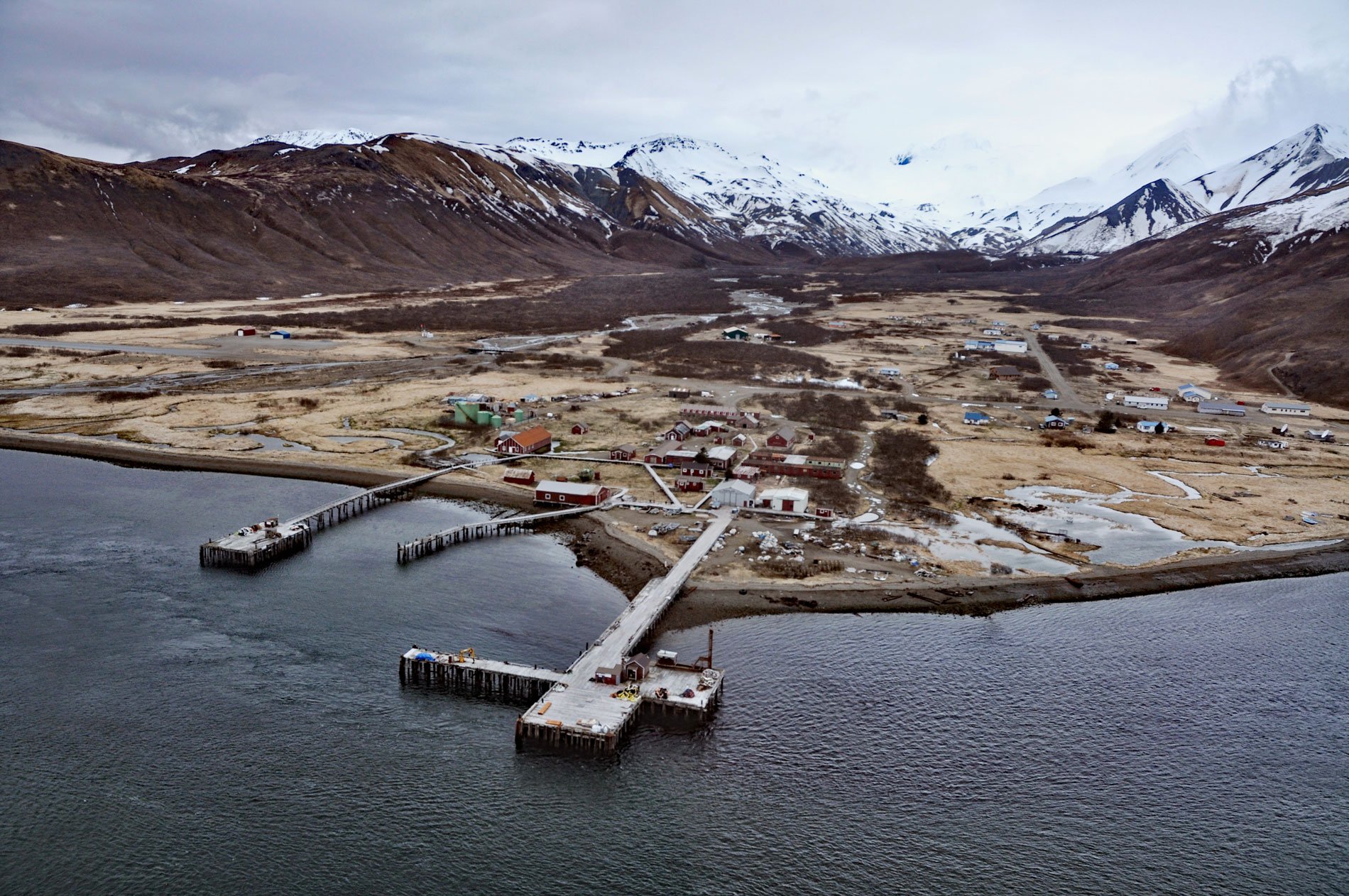False Pass is a small community on the east coast of Unimak Island, at the northern end of Isanotski Strait, about 142 miles (229 km) northeast of Dutch Harbor and 38 miles (61 km) southwest of Cold Bay, Alaska. Isanotski Strait was a name historically used for the entire water passage between the Bering Sea and the Gulf of Alaska separating the Alaska Peninsula from Unimak Island. This pass was used for millennia by Aleut Unangan who called the pass Isanax which means gap or hole. This was transliterated on Russian charts as Isanotski. The local name for Isanotski Strait is “The Pass”. English-speaking sailors called the strait False Pass believing it to be impassable at the northern end through Bechevin Bay which has extensive and constantly changing shoals with strong tidal currents affected by northerly or southerly winds. The northern entrance to Bechevin Bay is obstructed by a submerged shoal or sand bar at a distance of 1–2 miles (1.6–3.2 km) offshore with breakers that extend from the northeast point of Unimak Island in a northeasterly direction for 5–6 miles (8.0–9.7 km) parallel with the coast. Transiting in either direction requires extreme caution because the bars shift frequently. Entering Isanotski Strait from the south at Ikatan Bay can also be hazardous since the tidal currents can attain a velocity of 7 knots (13 kph), particularly near Whirl Point. Today, Isanotski Strait refers only to the 4 miles (6.4 km) between Ikatan Bay and Bechevin Bay. The entire pass is well marked by navigation aids and is used as a shortcut by vessels with a draft less than 10 feet (3 m) that want to avoid the transit of 180 miles (290 km) around Unimak Island.
In 1917, the Sockeye Salmon Company built and operated a new cannery at the village of Morzhovoi in Trader Cove on the Alaska Peninsula shore of Bechevin Bay. In 1919, at the end of the canning season in June, this cannery was moved to the Unimak Island side of the strait. The buildings were moved in sections using coal-fired steam-driven winches on pile drivers. The pile drivers were versatile construction rigs that were primarily used to drive the salmon fish traps and all the piling for the docks and foundation of the canning buildings. The cannery buildings at Morzhovoi were skidded onto barges and towed across the strait. The steam winches then pulled the buildings ashore. The main bunkhouses were built over or near freshwater streams which served as a sanitary disposal system. The entire cannery complex was connected by boardwalks and there were no roads. Separate quarters were provided for the Chinese and Aleut Unangan workers. The machinists and other tradesmen had their own bunkhouse and mess hall. There was a vegetable garden and meat was kept cool and protected from bears by being built over a pond created by a spring near the bunkhouse. Coal was used to fire the cannery boilers and process the salmon, heat the buildings, and cook the food. In 1920, the cannery was leased and then sold to P.E. Harris & Company. Prince Edward Harris was already a salmon broker in Seattle, and had several canneries in Southeast Alaska when he bought the cannery, fish traps, and vessels from Sockeye Salmon Company at False Pass. In 1921, a U.S post office named False Pass was established at the cannery, and the name was transferred from the strait to the community.
Fish traps supplied most of the sockeye salmon to the P.E. Harris & Company cannery. The cannery also bought fish from independent salmon seiners and gillnetters. Salmon traps in the False Pass area were located on the Ikatan Peninsula in Ikatan Bay. There were at least 10 fish traps, spaced about 1 mile (1.6 km) apart along the southern shoreline of Ikatan Bay. Some of these traps belonged to the P.E. Harris & Company and some to the Pacific American Fisheries cannery in Ikatan which was abandoned in about 1935. In 1951, P.E. Harris & Company was sold to Nick Bez, a reputedly notorious fish trap pirate, who owned several canneries in Alaska, Puget Sound, Washington, and Astoria, Oregon. In 1959, fish traps were outlawed following Alaska statehood, and in 1962, Bez renamed the company Peter Pan Seafoods, Inc. In 1981, the False Pass cannery buildings burned to the ground when a fire reportedly started in the generator house. In 2008, Bering Pacific Seafoods opened a shoreside seafood processing facility at False Pass. Today commercial fishing for salmon, cod, halibut, and crab continues to be the core of the community’s lifestyle and economy. The Alaska Marine Highway provides ferry service from Homer to False Pass every other week from May through September. It takes two and a half days to travel from Homer. A film about the P.E. Harris & Company cannery in False Pass and salmon trap fishing was made in 1936 and can be seen here. Read more here and here. Explore more of False Pass and Isanotski Strait here:

